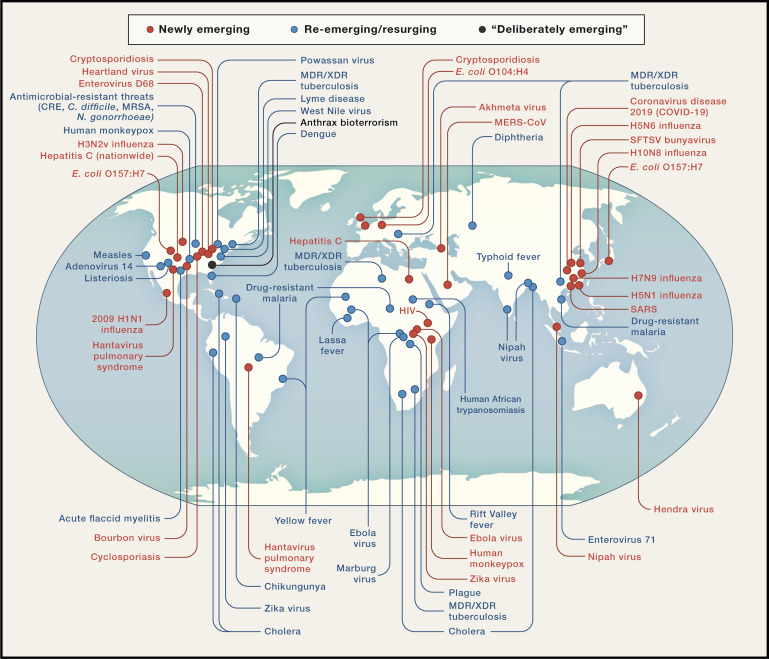
This is the distribution of emerging infectious diseases that threaten human health, created by Anthony S. Fauci, director of the National Institute of Allergy and Infectious Diseases, NIAID. Corona 19 is also listed as a map showing major outbreak areas. The map is published in a recent paper co-authored by Fauci.
The purpose of this paper is to elucidate the environmental and human factors why Corona 19 was born in the second half of 2019. Dr. Fauci, co-authored by NIAID Senior Advisor David M. Morens, published as a draft of the journal Cell. Through this, it is possible to find out in detail how emerging infections such as COVID-19 and the flu pose a threat to humanity.
The map shows the distribution of new and recurrent infections that may pose a threat to humanity, and the locations of occurrence and epidemics. For example, viruses, including influenza, are prone to mutations. Gene replacement between other influenza viruses is not uncommon, and this combination can quickly create Corona 19, which has a higher mortality and infectivity than seasonal influenza.
Corona 19 is not unstable so far, but since it has the ability to infect a variety of animals as hosts, the possibility of new births with infectivity to humans increases. In fact, most of the COVID-19 viruses end up being a mild cold even if they are infected. However, it is pointed out that there is a high possibility of causing large and deadly infectious diseases in the past before human beings acquired immunity. Conversely, if you think this way, you might be optimistic that COVID-19 is just a cold. But what cannot be said so is the fear of the virus. Not all viruses subside with time.
This map has recently become a threat to mankind. Once again, there is a disease that has subsided but recurs. Although it is not yet completely exhaustive, anthrax, which was once a topic of discussion as a biological weapon, is marked as an artificially created disease.
Most of these are unlikely to cause a pandemic. Ebola, a recent threat, certainly has a high mortality rate, but human-to-human transmission is not very high. Although there are concerns about resistant bacteria that are resistant to antibiotics even in bacterial diseases such as gonorrhea, it cannot be said to be a fatal disease.
If we look back over the past 100 years, the average human being has the flu every 20 years. Recently, a new influenza, called swine flu 10 years ago, caused a pandemic. However, it is not just that humans are helpless against the bacteria and viruses that will attack in the future. There are a number of measures you can take to prepare. In fact, in October of last year, many predicted that a new virus might be emerging. However, in order to prevent a more terrifying epidemic from happening, we must now learn properly from the global pandemic of COVID-19.
Medicines and vaccines must have been developed through science, but this alone cannot solve everything. The need to overcome infectious disease threats that more often lead to fatal emergencies. Corona 19 is one of the most intense species in the past 100 years, but nature is always inevitable and unpredictable. Related information can be found here.


















Add comment